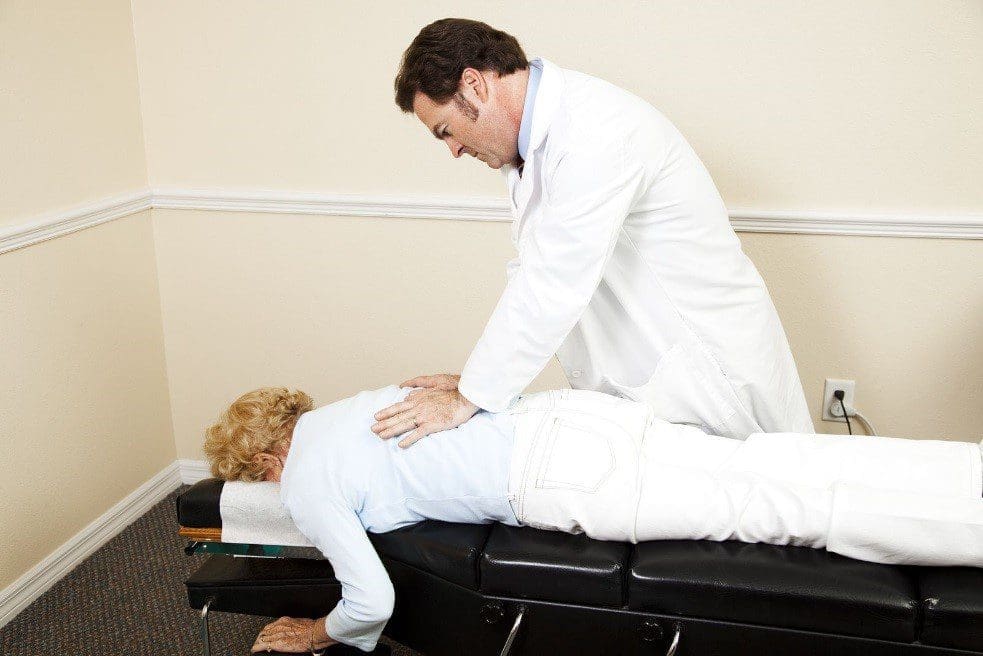
Construction workers often perform tasks that make them prone to back conditions. Back injuries are the most common type of ailment affecting construction personnel. According to the U.S. Bureau of Labor Statistics, 16 percent of non-fatal injuries are caused by back problems, resulting in workers taking days away from the job.
Back injuries may be due to stress on the muscles, nerves, or bones. A chiropractor who specializes in accident or personal injury care can offer a wide range of complementary treatments to different back problems. Here’s what you need to know about the risks for developing back pain, two kinds of back injuries, and how a chiropractor can help provide proper care.
The Occupational Safety and Health Administration (OSHA) recently reported the five prevalent risk factors for back pain. These risks include lifting, working in the same position for long hours, pushing/pulling/tugging, twisting/reaching/bending sideways/unequal lifting, and whole body vibration. Other environmental risks present in the construction industry are height of the work, floor surfaces, work area obstacles, ways of lifting, lifting beyond one’s capacity, tool belts, and temperature. The presence of these risk factors increases the chances of developing back injuries.
Spondylolisthesis and cervical radiculopathy are the two types of back injuries. Spondylolisthesis refers to the slipping of the vertebra, which happens mostly at the spine’s base. It can occur due to defect or fracture of one of the wing-shaped vertebrae parts. Cervical radiculopathy occurs when the nerve roots beside the cervical vertebrae are damaged or disturbed from compression.
A chiropractor cannot decrease the severity of spondylolisthesis, but he can help address any underlying neurological or mechanical origins of its symptoms. He may use one or more of these spinal adjustments, such as specific spinal manipulation for joints with restricted or abnormal movements and the flexion-distraction technique for degenerative disc problems and strain connected to spondylolisthesis. Spinal manipulation may also include instrument-assisted manipulation.
Manual therapies might be applied as well in order to treat injured tissues. Trigger-point therapy refers to applying pressure to particularly painful muscle points, while manual joint stretching and resistance techniques can improve muscle growth. Finally, instrument-assisted, soft-tissue therapy may help treat damaged spinal soft tissues.
As for of cervical radiculopathy, a chiropractor can offer helpful therapies. A successful case study cited conservative care with chiropractic manipulative therapeutic elements. The patient was a 60-year-old woman suffering from arm, neck, and shoulder pain. Treatment was composed of chiropractic manipulative therapy and therapies targeting the cervical spine. After six weeks of treatment, pain was reduced by 60% while grip strength also improved. In addition, a chiropractor provided education and exercises to help workers prevent similar injuries in the future. Hence, chiropractic care offers valuable complementary treatment to back injuries.
Back injuries are common among construction workers, but can be cured through a combination of relevant modalities, including chiropractic care.
“A beginner guide to back pain in the construction industry,” mcginley.co.uk
“Back Injuries in Construction and Other Industries,” cpwr.com
“Chiropractic treatment of cervical radiculopathy caused by a herniated cervical disc,” ncbi.nlm.nih.gov
“Management of Back Pain,” webmd.com

© Accident Care Chiropractic | Hablamos Español
Located in: North Portland, NE Portland, SE Portland, Gresham, Clackamas, Oregon City, Hillsboro, Bethany, Beaverton, Tigard, Forest Grove, Woodburn,
McMinnville, Keizer, Salem, South Salem, Bend, Vancouver, Hazel Dell, East Vancouver, Pasco, Kennewick, Lakewood.
We Specialize in Car Accident Treatment & Recovery
Home | About Us | Testimonials | Blog | Sitemap | Privacy Policy | Services | Locations | Contact Us